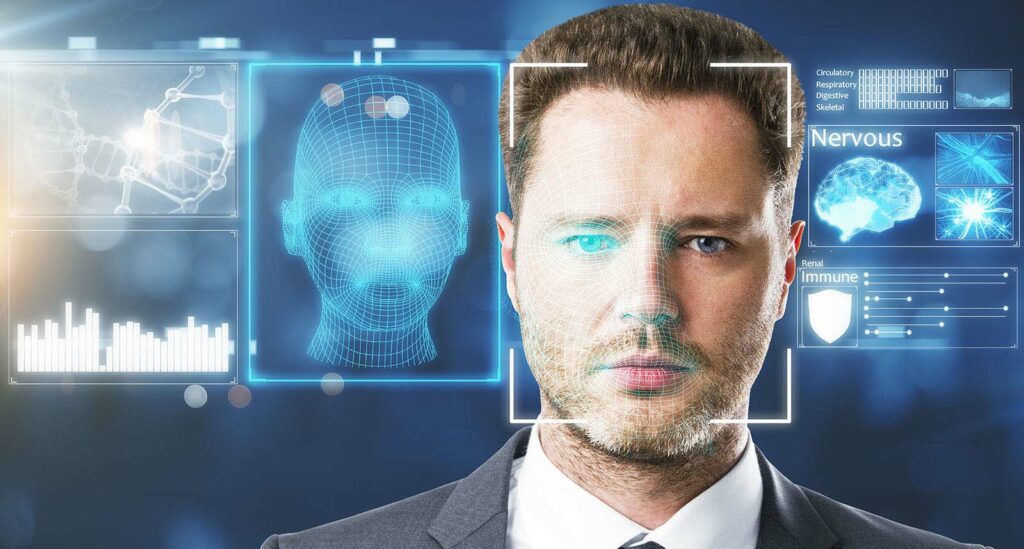
5 Significant Use Cases of Facial Recognition Technology
Facial recognition has become an increasingly important part of daily life. Thanks to technical developments, what was once fiction is now a reality. Technology has improved to the point that our faces can now be easily identified. This includes unlocking our phones, performing passport checks, and much more with absolute precision.
Before delving into the applications of face recognition, let’s first understand more about facial recognition technology. Online facial recognition is a biometric technique that uses an individual’s traits to identify them. These recognition systems, in this regard, record specific patterns of a human’s face and then evaluate and compare them with existing databases to authenticate client identification.
In this article, we will discover five significant use cases of face recognition in different areas.
Top 5 Use Cases of FRT
Finance Sector
A significant industry where facial recognition technology is becoming popular is the banking and finance industry. Many banks have already incorporated such technologies into their mobile banking systems, eventually lowering the need for traditional security procedures like passwords and PINs. As an additional layer of protection, some ATMs also integrate biometric face recognition tools.
Hence, face recognition services are beneficial for ensuring that the person withdrawing money is the owner of the account. In addition, they also detect any possible background manipulation that is unrecognizable with conventional procedures. Face recognition is widely employed in current banks for multiple purposes. Hence, customers can be identified and handled right away when they enter the company, known convicts can be closely traced, and workers can conveniently move without swapping off their cards multiple times. Hence, facial recognition technology has significantly reduced the efforts that banks and financial institutions usually put in when interacting with clients.
Healthcare Industry
Biometric face recognition has completely revolutionized the health sector. This technology does not just monitor the individuals entering the building. In fact, it ensures the timely identification of genetic disorders to accurately control patients’ medicine use.
In the health sector, face verification technology is integrated with other technologies to accurately diagnose patients. Moreover, it also helps gather detailed information regarding any patient, observe health conditions, and even identify early symptoms of serious diseases.
Numerous developed countries are now embedding caretaking robots with facial recognition technology to look after patients. The powerful technology provides customized interaction with patients as robots can identify a person from their previous dealings.
Social Media & Applications
Facial recognition is laboriously employed by social media businesses and application developers in smarter ways. Facebook is one of the initial adopters that utilized face recognition services for user identification.
Snapchat also achieved success with facial recognition to improve social engagement in users’ images by adding filters that allow them to modify their own facial attributes. Moreover, banking apps are switching to facial recognition for instant and seamless identification of their customers. Since there are people who can’t visit branches physically, they can utilize their smartphones or computers to deal with their banking needs. Often used in combination with other identification techniques, such as a PIN or password, two-factor authentication is another product of facial recognition technology that has been applicable since 2022.
Retail
Facial recognition technology is becoming more advantageous for the retail industry as it helps improve customer assistance in shops and online stores. Businesses are constantly taking steps to make the procedure of purchasing goods more convenient. Several online businesses allow their consumers to make purchases simply by showing their faces. Moreover, facial recognition is also used in the retail sector to get help in developing personalized customer experiences and accelerating fraud and theft inquiries.
Law Enforcement
Due to privacy concerns, biases, and erroneous identification, facial recognition technology in law enforcement has been a contentious topic. However, in certain circumstances, it has been beneficial. Face recognition technology has been used by police to identify shoplifters and track down dangerous criminals.
Nevertheless, in order to gain confidence from the public, facial recognition deep learning must be used and governed ethically. Facial recognition, which matches an individual’s face to a government photo ID, can also help law enforcement authorities verify an individual’s identification. It has also been used to find missing people and victims of slavery and human trafficking by employing cameras in public places including sidewalks, airports, department stores, and railway stations.
Final Remarks
Face recognition is a useful technology utilized by numerous organizations, ranging from enterprises to government agencies, for a variety of objectives. Today’s modern face recognition technology provides advanced technology solutions that enable quick detection and recognition of faces in pictures, videos, and live streams. Furthermore, the application of online facial recognition allows businesses and organizations to create confidence and credibility in their specific communities while also ensuring safety and protection.
With a solid foundation in technology, backed by a BIT degree, Lucas Noah has carved a niche for himself in the world of content creation and digital storytelling. Currently lending his expertise to Creative Outrank LLC and Oceana Express LLC, Lucas has become a... Read more